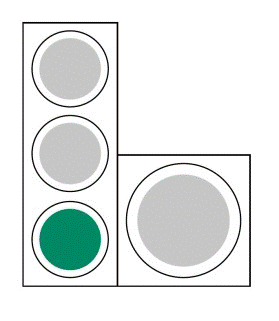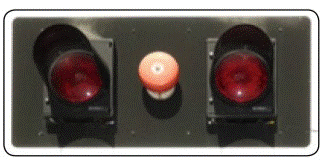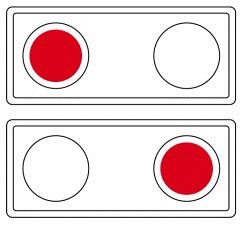 |
Traffic signs may also be used with traffic lights to qualify the meaning of the green light such as banning a turning movement or instructing traffic that it must move in a certain direction. |
|
|
For some signalised junctions with right-turn pockets (see page 75), an indicative right-turn green arrow may be added. When the full green light is on and the right-turn arrow is off, the right-turners can proceed into the pocket to wait for a safe gap in the opposing traffic stream and turn right when it is safe to do so. Other traffic movements are allowed to proceed. When the right-turn arrow is on as well, it indicates the opposing traffic is stopped by red traffic |
| If movement is allowed only in one direction, a green arrow pointing in that direction may replace the full green light. Signs are often used with these signals to indicate this permitted movement direction. |
 |
A green arrow may light up even though the red light is still showing. This means you can go in the direction shown by the arrow if it is safe to do so, whatever the other lights may be showing. |
 |
At some junctions, different traffic lanes may have separate traffic lights. You should only obey the traffic lights that apply to your lane. |



 When red lights are flashing alternately, all approaching vehicles must stop, until both red lights have stopped flashing. These lights are used at places where traffic is only stopped infrequently - for example at fire station exits.
When red lights are flashing alternately, all approaching vehicles must stop, until both red lights have stopped flashing. These lights are used at places where traffic is only stopped infrequently - for example at fire station exits.